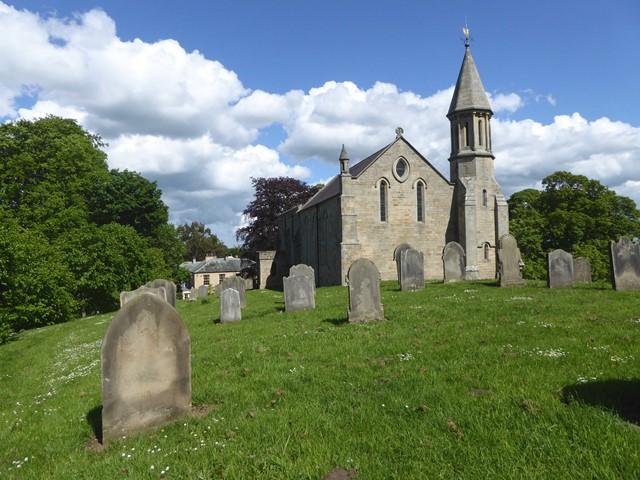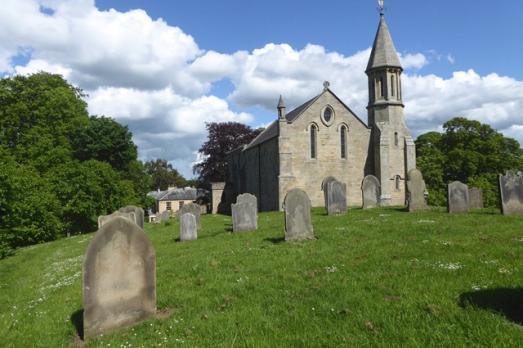Early English (lancet) style church, the chancel is almost entirely medieval internally with a medieval three bay arcade in the nave. The church was extensively but not insensitively restored in 1848 to designs by John Dobson of Newcastle. The south western bell turret is the only stridently 19th century element with square base supporting an octagonal turret surmounted by a short stone spire. Walls are of sandstone with varying types of rubble walling contrasting with ashlar dressings to the architectural features such as doors, windows and generally.
Internally the walls are plastered except for the chancel and vestry. Floors are of stone paving with several ledger stones, with suspended timber platforms to the pew areas. The chancel roof was replaced in 2014 and the nave roof was reslated with Welsh slates in 2020. There are three lancet windows in the chancel with ‘grisaille’ type glazing dated from the 1860s, believed to be by William Wailes of Gateshead. All the other windows are clear glass in diamond leading.
The choir stalls incorporate 17th century bench poppy heads. An elaborate medieval cross slab is mounted on the west wall of the aisle, along with a fragment of what is believed to be an AngloSaxon cross head. The stone font has unusual carving and its history has been clarified in 2016 during the research into the contents of the three information boards, which show a timeline of the history of the church in the setting of the village.
It is a genuine Saxon font and Saxon engraved stones have been discovered in the chancel identifying that the Saxon church, formerly on this site, was stone built and not timber as was originally thought. The altar and integral reredos painted and gilded were made in 1923 by H Brown and Sons of Newcastle and attached to the east wall of the chancel, also a wall mounted monument is on the south side. A selection of marble tablets is mounted on the north wall of the nave, including first and second World War memorials.
The churchyard contains a considerable number of ancient headstones.


